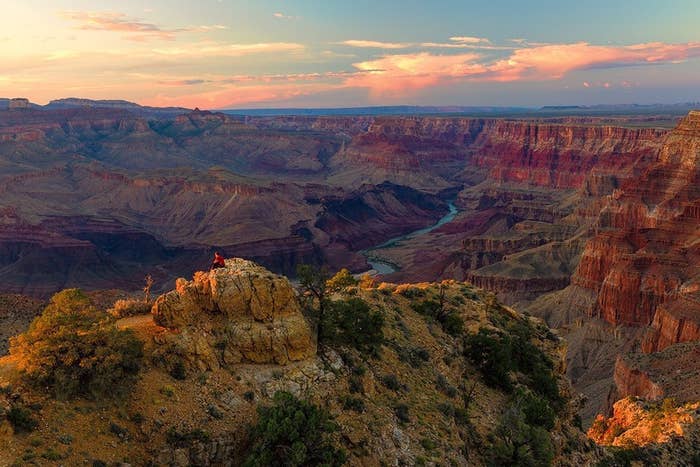
There's a battle brewing in the West, and the feds are ready to take off the gloves.
In a speech that seemed a bit like a battle cry Tuesday, U.S. Interior Secretary Sally Jewell laid out a broad vision for conservation in the U.S., calling for renewed efforts to fund National Parks, reaching out to a more diverse group of Americans, and cultivating new generations of people who appreciate parks.
But the address also included a strong response to recent conflicts in the West. Those conflicts, including the standoff at an Oregon wildlife refuge, the Bundy family's confrontation with the feds in 2014, and several other skirmishes, were sparked by the federal government's management of vast tracts of land in Western states.
While Jewell didn't mention those standoffs by name, department spokesperson Jessica Kershaw in an email to BuzzFeed News cited both Oregon and Nevada as examples of what Jewell referred to as "the emergence of an extreme movement to seize public lands" and "land grabs."
At a time when public lands face threats like land grabs & climate change, we can’t afford to turn our backs on them. #parksforall
"This movement has propped up dangerous voices that reject the rule of law, put communities and hard-working public servants at risk, and fail to appreciate how deeply democratic and American our national parks and public lands are," Jewell said Tuesday.
The secretary also made a number of other hints that the feds are ready to take a harder line with those trying to stop conservation, including touting the benefits of the Antiquities Act — a law passed in 1906 that gives the president the power to designate national monuments with the stroke of a pen, and is among the most controversial tools used to set aside Western land.
The act has rankled some locals since at least the 1990s when Bill Clinton used it to create the Grand Staircase-Escalante National Monument in Utah. Today, it continues to prompt heated debate, with conservationists and some native groups demanding more land protections, while ranchers and mining interests call for fewer.
For 100+ yrs, presidents have used Antiquities Act to protect special places that might be lost forever #parksforall
Jewell described the Antiquities Act as "one of the most important tools a president has to improve our country," adding that the Act ought to be used even if it is controversial.
"I do not think the Act should only be used in places where there is complete agreement, as some are suggesting," Jewell said.
The secretary also blasted development efforts, arguing that a "haphazard web of transmission lines, pipelines and roads" would disrupt wildlife habitat, and warned "that natural areas out West are disappearing at the rate of a football field every two and a half minutes."
"We need to correct course if we are to ensure a bright future for our public lands and waters," Jewell said.
The secretary also hailed efforts to protect the sage grouse, a bird that lives in multiple Western states and has been the subject of a bitter fight over conservation and land use. Jewell said her department's work to keep the bird off the endangered species list was a success thanks to "epic collaboration" with Westerners and was a "model for the future of conservation."
"Stakeholders came together" to work out a solution for the bird rather than shut "down all economic activity," she said.
Conservations are likely to see in Jewell's speech potential future victories; she called for a strong response to threats like climate change and funding shortfalls. But many of the points are precisely the issues that have prompted tension in the West, indicating those conflicts are likely to persist.
Painting a dire picture of the future, Jewell said public lands could themselves become an endangered species if action isn't taken.
"If we stay on this trajectory, 100 years from now, national parks and wildlife refuges will be like postage stamps of nature on a map," she said. "Isolated islands of conservation with run-down facilities that crowds of Americans visit like zoos to catch a glimpse of our nation's remaining wildlife and undeveloped patches of land. Now, that can't — and won't — happen."
